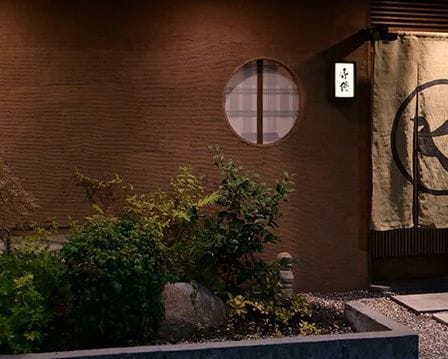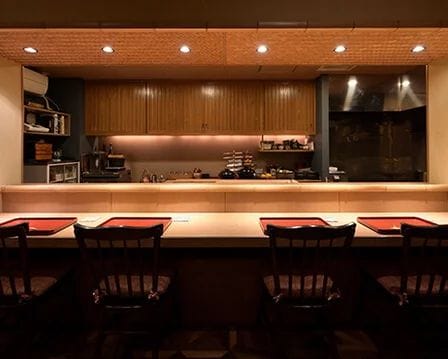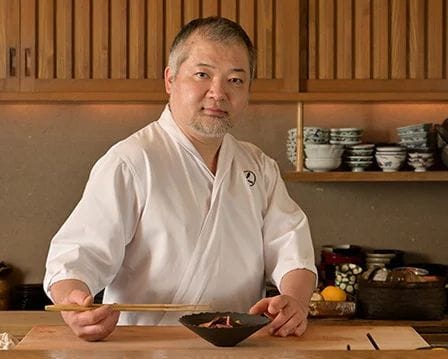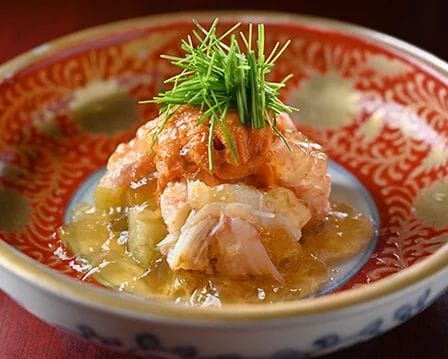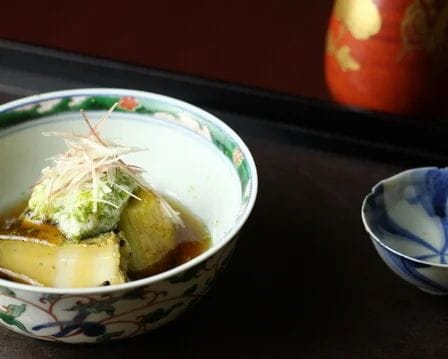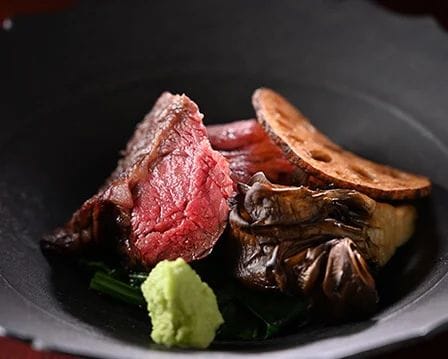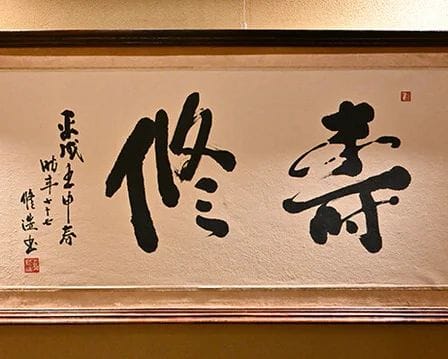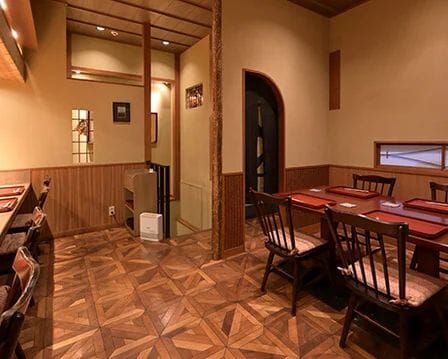Jushu
Ingredients from the chef’s hometown of Saga Prefecture are made into exemplary Kansai-style kappo dishes that showcase the unmatched quality of each one.
One of the first things that greets guests coming across the Michelin-starred restaurant Jushu is the distinctive characters on the illuminated signboard outside, bearing the restaurant’s name. It’s a motif that runs through the restaurant, courtesy of the grandfather of owner and head chef Senzaki Masaaki.
Jushu’s name is taken from a saying by Chinese philosopher Mencius (or Mengzi in Eastern philosophy), meaning to live life every day with discipline, cultivating one’s body and mind. It was a philosophy that Chef Senzaki’s grandfather, an accomplished poet and calligrapher, lived by, and one that deeply impacted the way the younger Senzaki viewed life. It was with this in mind that Chef Senzaki embarked on his culinary career, leaving his native Saga Prefecture to train in the birthplace of traditional Japanese cuisine, the Kansai region, for 10 years. This was followed by five more years in Tokyo, and finally the opening of Jushu in 2010.
Though “jushu” is a word heavily imbued with discipline and self-improvement, Chef Senzaki is far from the stern, imposing figure that the restaurant’s title makes him out to be. Though he may not be a character much for words, a meal at Jushu has come to be valued for the relaxing atmosphere that Chef Senzaki’s service creates, just as much as its Michelin-starred traditional Japanese cuisine.
Nonetheless, as a man who views every day as an opportunity to improve himself, 15 years’ worth of continuous improvement is immediately evident. Using what he learned from a decade training in Osaka’s Kitashinchi district, Chef Senzaki takes ingredients from his home prefecture of Saga — including the vaunted Imari beef, which is highly valued for its “tsuya-sashi” glossy marbling — and applies traditional Kansai technique to craft dishes that showcase his both his skill as a chef and the quality of the ingredients.
Most people typically associate Michelin-starred cuisine with flashy presentation and impressive appearances. But Chef Senzaki takes a decidedly different approach with his service: by fine dining standards, the dishes he puts forth may even be considered dull to look at. A single bite, however, speaks volumes; from the moment the first spoonful enters the mouth, a guest can immediately feel the flavors of the ingredients and the skill of the chef. The subdued beauty of the Ko-Imari and Karatsu ceramic ware on which the dishes are served — also hailing from Chef Senzaki’s native Saga — contributes to the atmosphere of the meal.
Nishi-Azabu is considered a “battleground” of Japanese restaurants, where only the strongest and most skilled survive. The fact that Jushu has not only established itself as a major player, but also attracted dozens of hungry travelers wandering its back alleys in search of the elusive restaurant, more than speaks for itself.


